Your Facebook ads aren’t working. After playing detective, you realize it’s not the creatives, but the wrong people seeing them. Meanwhile, your ROI is dying a slow death.
You try every trick in the book, but it’s still not working. The truth? Your ads do work—it’s just that you’re unknowingly making a few mistakes that might be costing you big time.
The worst part: even a brilliant copy or ad creative doesn’t cut it.
From our experience, many D2C brands, agencies, and SMBs are looking for answers. Even brands that work with a top-tier Facebook ads agency sometimes overlook these details.
That’s why this deserved a blog—and a highly insightful one.
Let’s find out where brands are going wrong—and how to finally fix your targeting so the right people actually see your ads.
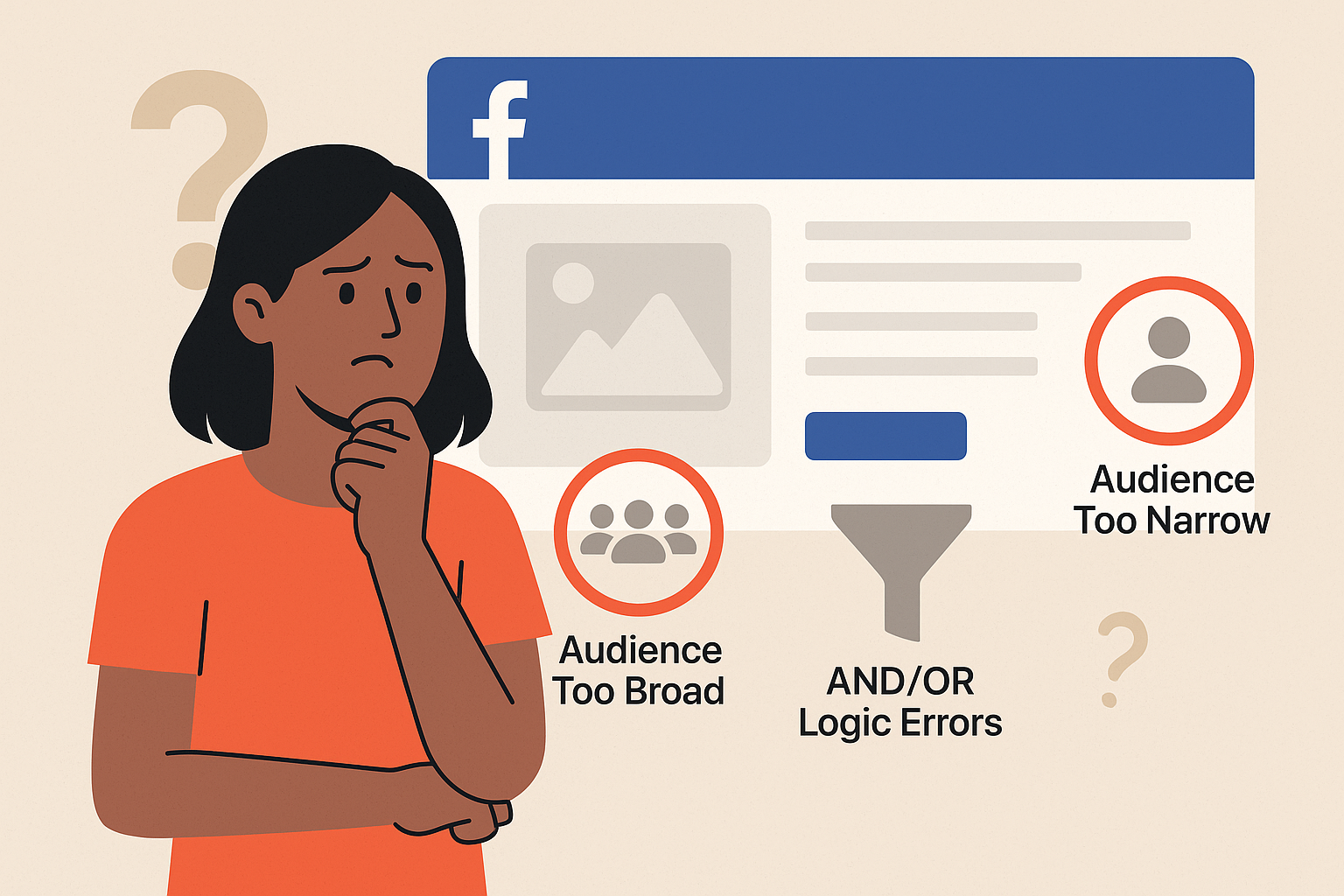
Real Reasons Why Your Facebook Ads Aren’t Working
If you’ve ever launched a campaign with stacked interests and fancy filters, only to get lackluster results, you’re not alone. Most advertisers fall into the same traps:
1. Targeting is too broad or too narrow
When you expand your targeting, you end up reaching uninterested users and poor relevance scores.
In the same way, the flip side is bad. You see, hyper-niche targeting slows your campaign reach, costing you high clicks and limited impressions. Something we see often when new clients approach our Facebook ads marketing agency.
Quickads tip
Try audience sizes between 500k–2M, and deep dive on interests, demographics, and lookalikes for balance
2. Shallow demographic data is done to death
Sticking to the basic demographic info like age, gender, or location means your Facebook ads are like taking a shot in the dark. It's no brainer---people of the same age group can have varied interests and behavioral traits.
Let's say you're targeting women aged 30-45 in Texas who do not talk fitness preferences, brands, or even their favourite NBA or NFL team; it's a recipe for low engagement.
Quickads tip
Try Facebook Audience Insights to go explore further:
- Interests: Think Peloton fans or Whole Foods loyalists
- Behaviors: Like recent travelers or frequent online shoppers
- Purchase habits: For instance, those who often click on 'Shop Now' or buy men's apparel."
This is a foundational step for any successful Facebook advertising agency trying to improve audience engagement.
3. You’re using AND/OR Logic generously
The wrong use of AND/OR logic will empty your Facebook ad budget. Let’s say, you use OR too broadly like Adidas, Nike, or Underarmour. Your ads are seen by a large, irrelevant group, leading to wasted spend on users who aren’t interested in your offer.
If you pile up too many ANDs like Adidas, Nike, or Undearmour, your audience pool shrinks down, with cash burn and increased costs.
Quickads Tip
- Use AND to layer traits for relevance, e.g., “Women in New York AND interested in Lululemon AND online shopping.”
- Use OR to broaden within a theme, e.g., “People interested in Nike OR Adidas OR Under Armour” (all sportswear brands).
This kind of targeting setup is usually handled efficiently by an experienced Facebook ad agency.
4. Ad fatigue from stale creatives
Running the same ads for longer periods leads to ad fatigue—users ignore, hide, or worse, report your ads, increasing your costs and dipping engagement.
That’s what overexposure of your ads can do.
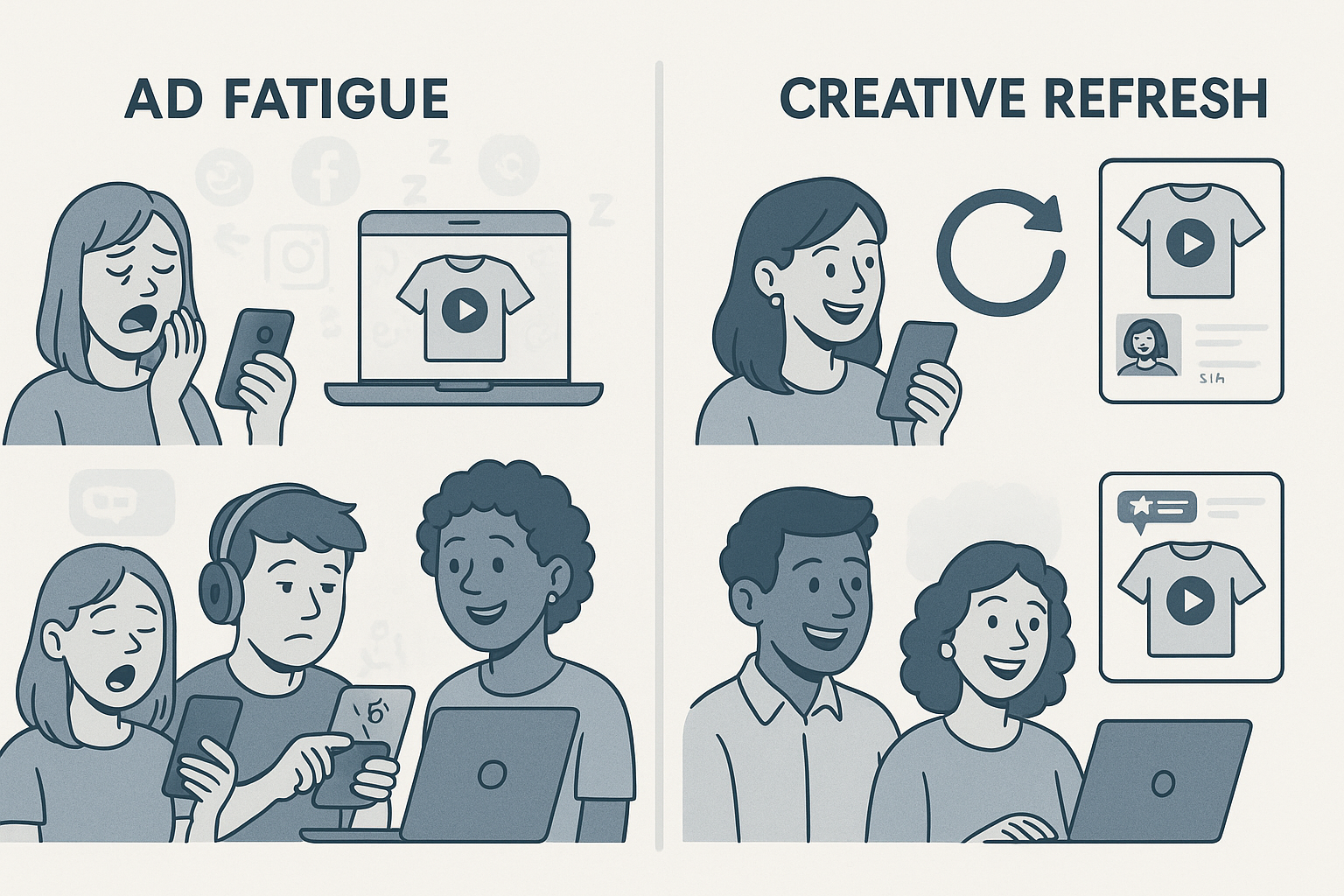
Quickads Tip
- Run 3-4 ad variations for one set at a time—don’t push and let the algorithm do its job
- Shuffle new ad creatives every 2-4 weeks or if the frequency crosses 2.5 or performance starts declining
- Try a creative split of an 80:20 ratio, where 80% of proven performers and 20% of new experiments.
Even the best Facebook ads agency cycles through fresh creatives every few weeks.
For more actionable creative ideas, explore Facebook ad optimization best practices.
5. iOS updates and privacy shifts break targeting
Apple's App Tracking Transparency or ATT has restricted Facebook's ability to monitor user behavior. Diversify targeting with broader interest and demographic segments to maintain reach, but monitor for relevance and performance dips.
SS apps and websites. This, unfortunately, makes pixel-based retargeting and custom audiences less effective. More so, when the majority of iOS users opt out of tracking.
Quickads Tip
- Create custom audiences from on-platform actions like users who watched your videos for 3 or more seconds, engaged with your Facebook/Instagram posts, or opened your lead forms
- Regularly update your lookalike audiences using your newsletter or email subscribers list to become privacy compliant
These tactics are increasingly vital as a smart Facebook ad agency reworks its targeting approach.
Hard truths about Facebook Ads that most brands don’t know
1. Lookalike Audiences are no longer the holy grail
Lookalike audiences aren’t as effective as before. Meta’s algorithm now prioritizes its own data and automation over manual audience definitions.
What’s happening now: Advantage+ and “Detailed Targeting Expansion” are now default, meaning Facebook will broaden your audience far beyond your lookalike or interest selections, even if you try to be specific.
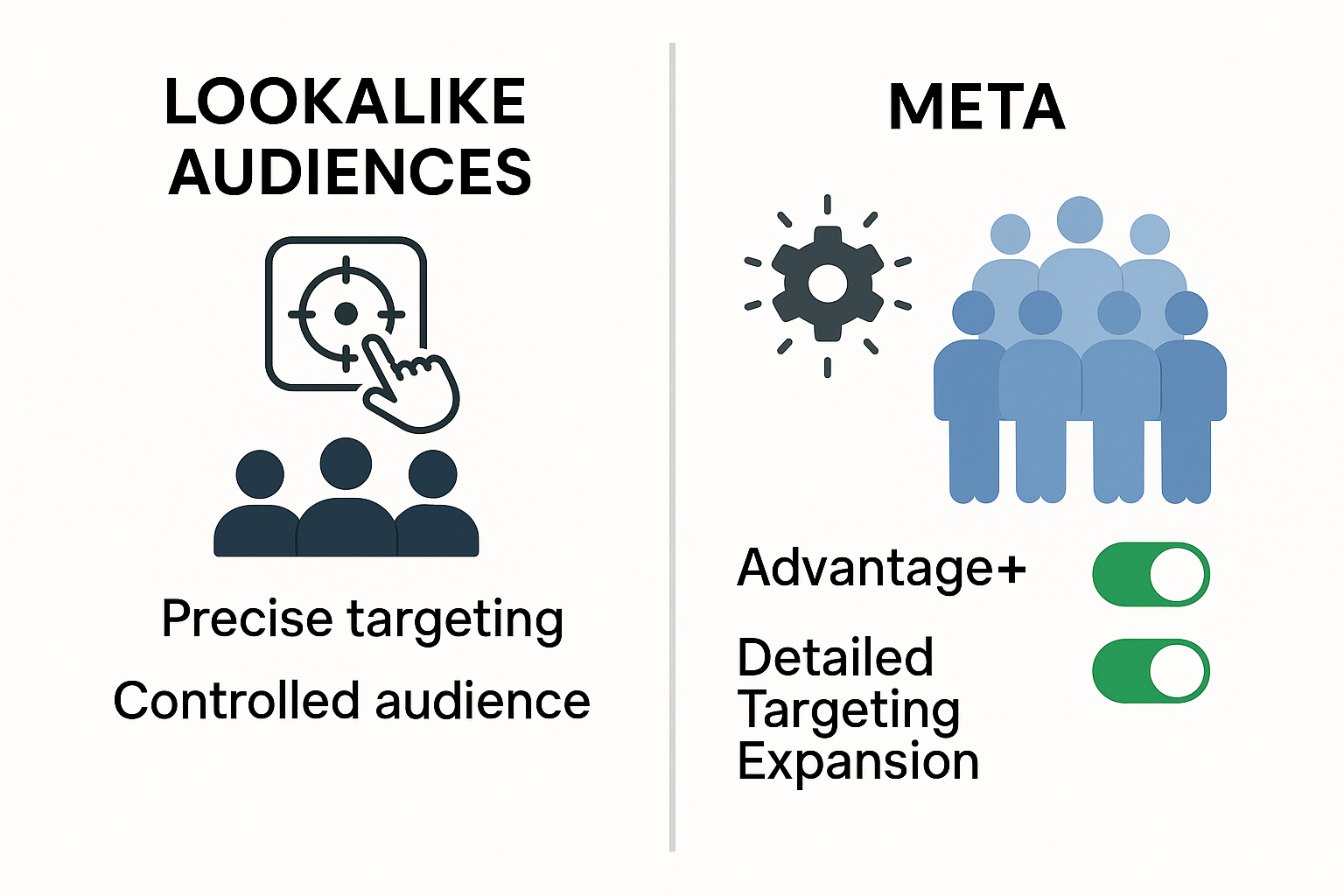
Quickads Tips
Try the Who, How, What” Framework
Every creative should answer:
- Who is this for? (target persona)
- How does your product solve their problem?
- What exactly does your product do?
This is a standard practice every seasoned Facebook ad agency follows.
2. US Privacy Laws: CCPA Limits Use of Customer Data
The California Consumer Privacy Act (CCPA) forbids how advertisers can use customer data for Facebook ads, especially for retargeting and custom audiences.
Nearly 12% of American Facebook users are affected by CCPA opt-outs, reducing audience sizes in California by 10-15%. This means you can’t reach past visitors or customers in such states.
Quickads Tips
- Exclude past customers and visitors from your Facebook prospecting ads.
- With CCPA shrinking retargeting pools, every dollar should go toward finding new buyers.
This is a must-do if you work with a serious Facebook ad management agency.
3. CPC Spikes During Holidays
The average Facebook cost per click (CPC) is around $0.77 for traffic campaigns and $1.88 for lead generation ads.
However, during major US holidays like Black Friday and Christmas, CPCs can increase by 30–50%, meaning a typical $1.00 CPC could rise to $1.30–$1.50 or more.
This spike is due to intensified competition for ad space.
4. Competition and User Behavior Shift during US holidays
Facebook’s average conversion rate across industries is about 8.8%, but it can drop by up to 20% during busy holiday seasons.
This happens if your creative and messaging aren’t personalized for the season. User behavior changes during holidays, with more competition and shifting purchase intent.
Quickads Tips
- Start holiday campaigns at least 2 weeks before peak dates to get a head start
- Let new campaigns warm up for 3–7 days before making changes—don’t react to single-day results.
Facebook Ad Strategies to find the right audience
1. Mille Feuille Targeting: Layer Like a Pastry
Mille Feuille is a French dessert made of many thin layers stacked together.
Unlike relying on a single broad audience trait, Mille Feuille targeting stacks multiple filters to serve your ads to a more precise, high-intent audience.
Layering is done to narrow down your audience in a strategic way. Each layer—be it demographic, geographic, behavioral, or interest-based adds specificity and relevance.
This layered approach is something every Facebook ads agency should implement.
Try this workflow
- Start with Core Demographics: Age, gender, parental status (e.g., parents aged 25–40).
- Add Location Layer: Target by city, zip code, or proximity (e.g., within 5 miles of your store).
- Layer in Interests & Behaviors: Fitness for sportswear, tech gadgets for electronics, etc.
- Apply Exclusions: Remove users who have already converted, unsubscribed, or are irrelevant (e.g., current gym members for a gym promo).
- Set Frequency Caps: Limit impressions to 2–3 per user per week to reduce fatigue.
- Split into Audience Buckets: Separate warm audiences (site visitors, past customers) from cold audiences for message customization.
2. Refine your Custom Audiences for Precision
Custom audiences let you re-target users who have already interacted with your brand, through purchases, page visits, or sign-ups. These users are far more likely to convert compared to cold audiences.
It has changed over the years, with match rates from uploaded lists (like emails or phone numbers) dropping from 80-90% to around 60-70%, especially among iOS users.
Performance Marketer's Workflow:
- Start with First-Party Data: Upload CRM lists (buyers, newsletter subscribers, webinar attendees).
- Segment by Funnel Stage: Create custom audiences for cart abandoners, product viewers, and past purchasers.
- Exclude to Save Budget: Remove recent customers from campaigns to avoid redundancy and wasted spend.
- Use On-Platform Engagements: Build audiences from users who watched 25 %+ of your video, saved an Instagram post, or opened a lead form.
- Refresh Regularly: Sync email lists weekly to maintain accuracy and relevance.
A good Facebook advertising agency builds campaigns around these.
3. Improve your Lookalike audiences
But the most common Lookalike audience mistake is using low-quality or outdated seed lists, like all website visitors or old customer data, instead of focusing on recent, high-value customers. This leads to diluted, less effective Lookalike Audiences and higher costs per acquisition.
Here is an actionable workflow
a. Upload Your Top Customer List: Gather a list of your highest-value, most recent customers—those who have made multiple purchases, have high lifetime value, or have recently converted.
b. Create 1–5% Lookalike Audiences: Start by creating a 1% Lookalike Audience—this is the group most similar to your seed. If you need more scale, test 2–5% audiences, but know that similarity drops as size increases.
c. Test Different Percentages for Scale vs. Similarity: Run campaigns with both 1% and larger (e.g., 3% or 5%) Lookalike Audiences. Compare results for cost, reach, and conversion rates.
It’s what a smart Facebook ads agency does to optimize scale.
4. Target by Life Events for Timely Relevance
Targeting users during major life moments—like getting married, moving, or starting a new job—lets you connect when they’re most receptive and likely to take action.
Here’s an actionable workflow you might want to try:
a. Use Facebook’s Life Event Targeting or Google’s In-Market Audiences: Platforms like Meta (Facebook/Instagram) and Google let you target users who have updated life events.
For example, you can reach “recently engaged” users or “new homeowners” with tailored ads.
b. Tailor Creative to the Event: Target by customizing your messaging. For instance, offer “Congrats on the move! Here’s 20% off home decor” to new movers or Planning your honeymoon? Explore our travel deals for newlyweds.
This targeting tactic gives the best Facebook ads agency an edge during campaign planning.
5. Try Hyper-Focused Niche Targeting
Drilling down to micro-segments like “vegan marathon runners in Austin” allows brands to serve hyper-relevant ads, often resulting in much higher conversion rates.
Try this actionable workflow you’ll find useful:
a. Blend Niche Interests: Use detailed interest and behavior filters to zero in on your ideal customer. For instance, combine “vegan,” “marathon,” and “Austin” to reach a tightly defined group.
b. Craft Specific Creative: Personalize your message based on the audience. For instance, “Plant-based protein for Austin’s marathoners—recover faster, naturally.”
c.Monitor Frequency & Fatigue: Keep frequency at 2–3 impressions per user per week for awareness, and up to 4–5 for retargeting. Above 5–7 per week leads to ad fatigue and lower results.
When used well, this helps an ecommerce Facebook ad agency drive better ROI.
6. Creative as the New Targeting Tool
With Facebook shifting to broader targeting, your creative (images, videos, copy) now acts as the major draw, pulling in the right people and letting the algorithm do its job.
Here’s an easy-to-implement workflow
a. Stack up Multiple Creative Variations: Build 4–5 distinct creatives for each persona or use case (e.g., runners, yogis, gym-goers).
b. Refresh Creatives Weekly: Avoid ad fatigue and keep relevance high by updating your creative assets every 2 weeks.
c.Align with Seasonality/Trends: Try matching creative themes to current events or buying cycles (e.g., “Back-to-School” for parents, “Monsoon Fitness” for gym-goers in US)
Any Facebook ads agency worth its salt will never compromise on this.
7. Continuous Testing and Optimization
Even the most successful brands try this—set and forget. They proactively test, learn, and refine both targeting and creative for maximum impact.
Use this workflow for the best results
a. Run A/B Tests: Always test at least two audience segments and three creative variants per campaign; even a 10% lift in CTR from a new segment can mean 20–30% more conversions.
b. Monitor Key Metrics: Set thresholds—if CTR drops below 0.8% or ROAS dips under 2.0, pause and diagnose; use frameworks like AAARRR (Acquisition, Activation, etc.) to track each stage.
c. Iterate Based on Data: Review performance data every 72 hours; reallocate 70% of your budget to the top-performing segment and creative, and refresh underperformers.
d. Scale What Works: When a segment delivers a CPA 20% below your average, increase spend by 15–20% weekly, but keep testing new segments to avoid plateauing.
This is where a performance-first Facebook ads marketing agency truly shines.
Wrapping Up
If your Facebook ads aren’t working, chances are the problem isn’t the creative. It’s who’s seeing it. Even the most eye-catching ad falls flat if it reaches the wrong audience.
What sets high-performing brands apart is how they approach targeting. They don’t rely on broad guesses. They layer audience traits, test different segments, refresh creatives regularly, and let performance data guide their next steps.
So if your results have been unpredictable and you're unsure why, this is where to begin. Fix your targeting, and everything else, like clicks, conversions, and ROI, will start to improve.




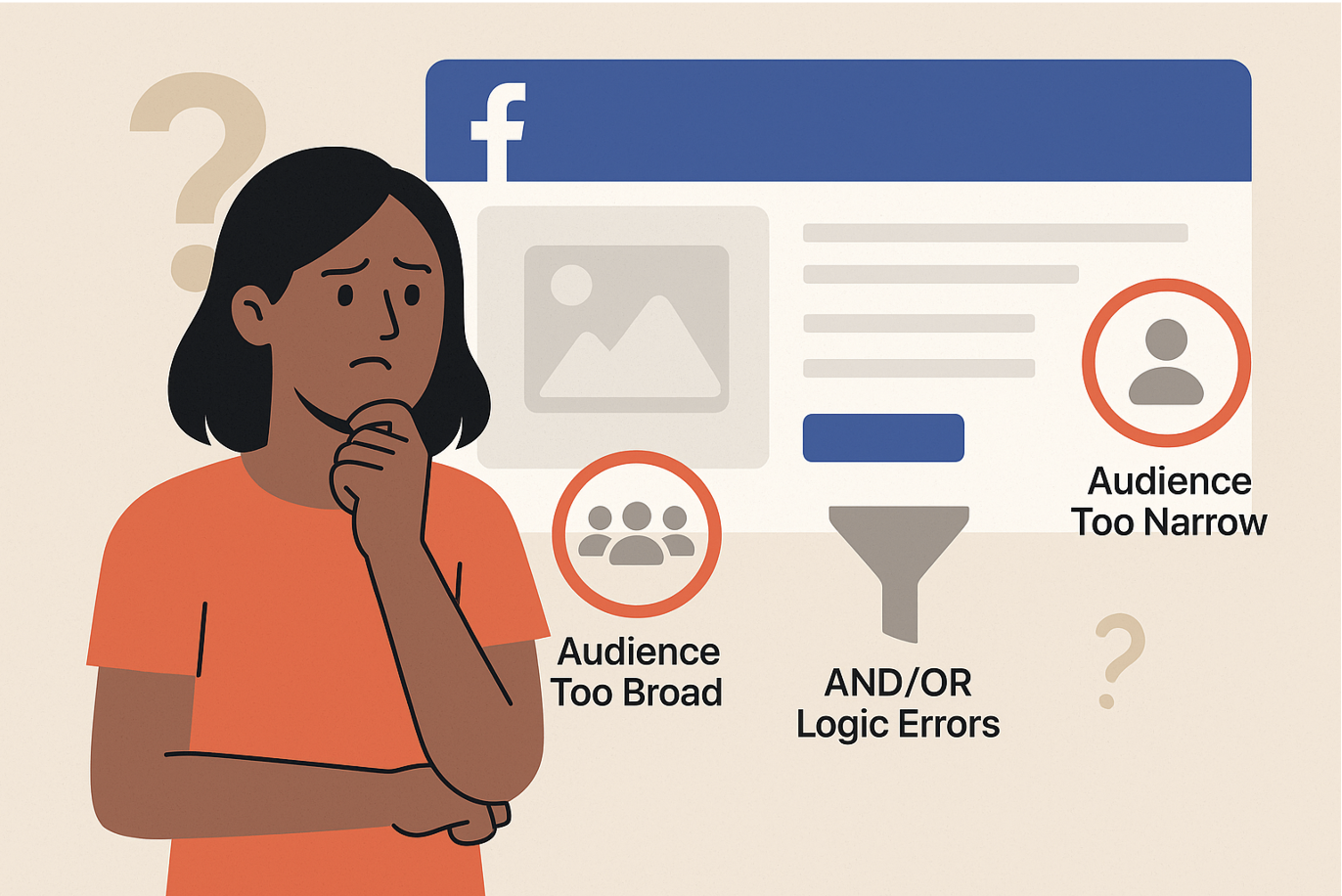



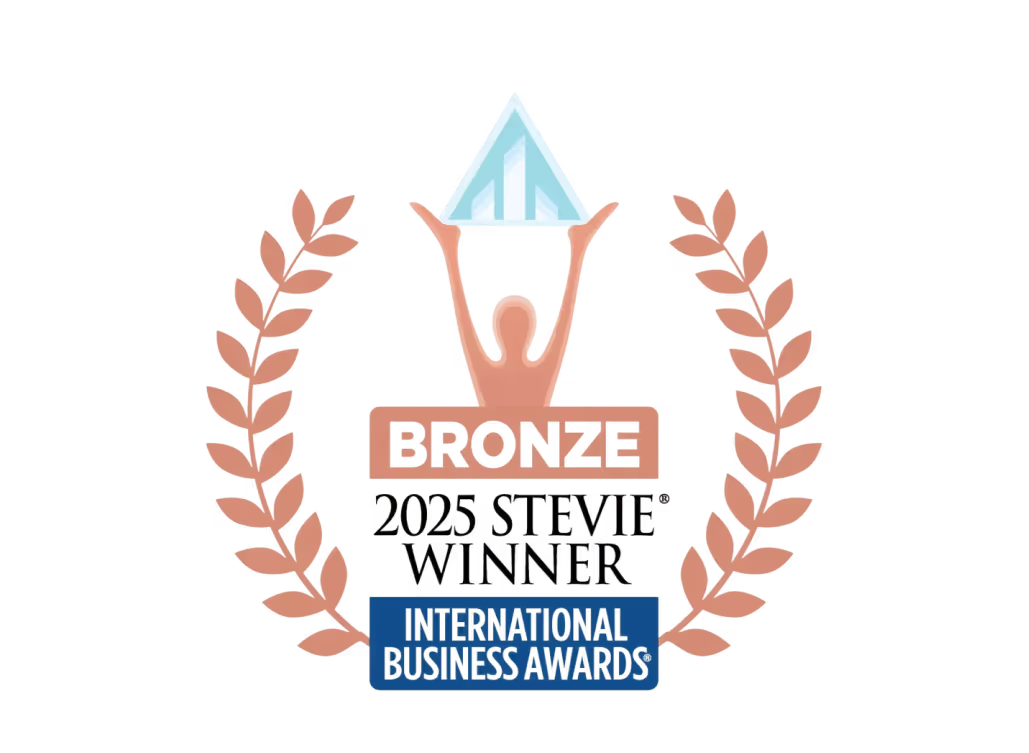
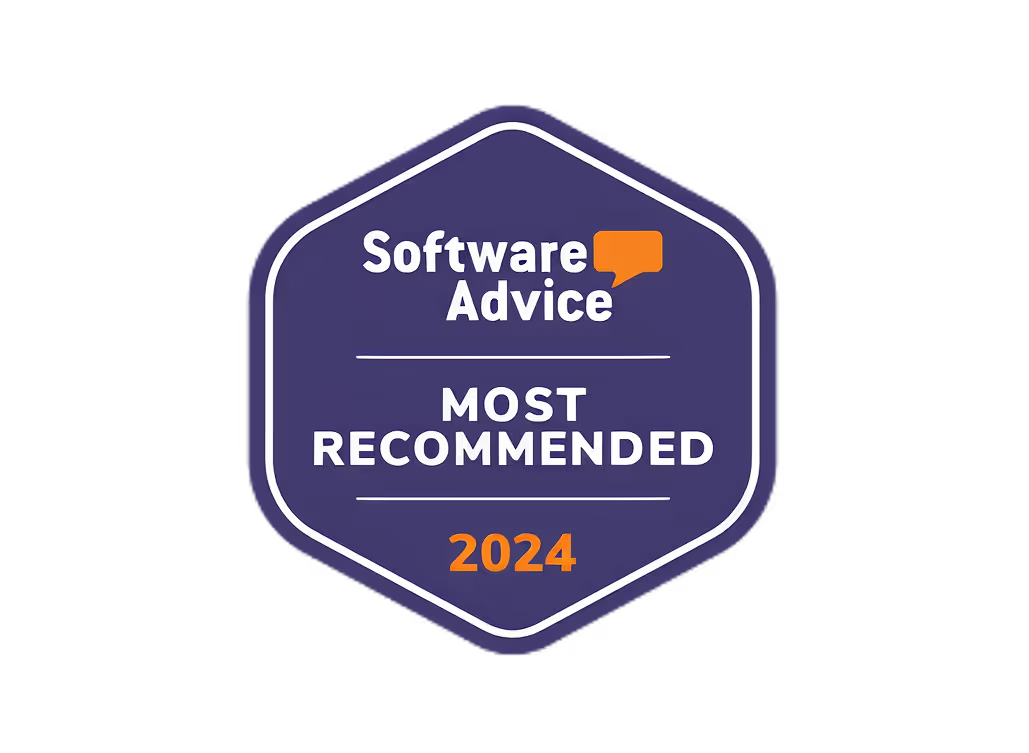
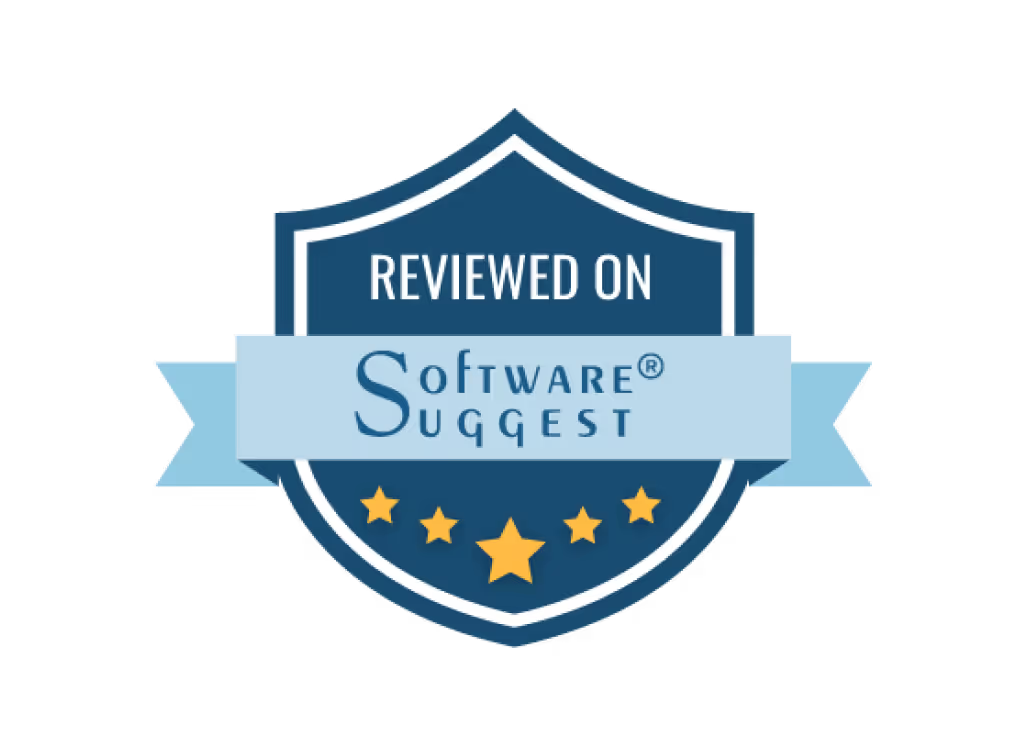

%201.avif)